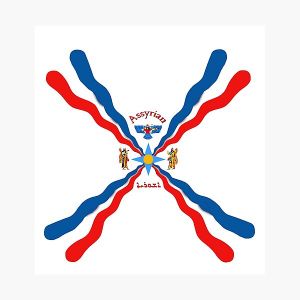Language/Assyrian-neo-aramaic/Grammar/Pronouns
Hi Assyrian Neo-Aramaic learners! 😊
In today's lesson, we will be discussing pronouns in Assyrian Neo-Aramaic. We will look at the different types of pronouns, how they are used, and how to form them. By the end of this lesson, you should have a good understanding of pronouns in Assyrian Neo-Aramaic.
Types of Pronouns
Pronouns are words that can be used to replace nouns. In Assyrian Neo-Aramaic, there are three main types of pronouns: personal, possessive, and demonstrative.
Personal Pronouns
Personal pronouns are used to refer to people or things. They can be singular or plural, and they can be either masculine or feminine. Here are some examples of personal pronouns in Assyrian Neo-Aramaic:
- Singular Masculine: ənə (I), ətə (you), əhə (he)
- Singular Feminine: ənət (I), ətət (you), əhət (she)
- Plural Masculine: ənəm (we), ətəm (you), əhəm (they)
- Plural Feminine: ənətm (we), ətətm (you), əhətm (they)
Possessive Pronouns
Possessive pronouns are used to indicate ownership or possession. They can also be used to indicate a relationship between two people. Here are some examples of possessive pronouns in Assyrian Neo-Aramaic:
- Singular Masculine: ənəy (my), ətəy (your), əhəy (his)
- Singular Feminine: ənəty (my), ətəty (your), əhəty (her)
- Plural Masculine: ənəym (our), ətəym (your), əhəym (their)
- Plural Feminine: ənətym (our), ətətym (your), əhətym (their)
Demonstrative Pronouns
Demonstrative pronouns are used to point out specific people or things. They can be either singular or plural, and they can be either masculine or feminine. Here are some examples of demonstrative pronouns in Assyrian Neo-Aramaic:
- Singular Masculine: ədə (this), ədəhə (that)
- Singular Feminine: ədət (this), ədəhət (that)
- Plural Masculine: ədəm (these), ədəhəm (those)
- Plural Feminine: ədətm (these), ədəhətm (those)
Forming Pronouns
Pronouns in Assyrian Neo-Aramaic can be formed by adding suffixes to nouns. For example, the suffix -əy can be added to a noun to form a possessive pronoun. For example, the word for "book" is ktabə, so the possessive pronoun for "book" would be ktabəy (my book).
The suffix -əhə can be added to a noun to form a demonstrative pronoun. For example, the word for "house" is baytə, so the demonstrative pronoun for "house" would be baytəhə (that house).
The suffix -əm can be added to a noun to form a plural pronoun. For example, the word for "person" is nəsə, so the plural pronoun for "person" would be nəsəm (people).
Conclusion
In this lesson, we discussed pronouns in Assyrian Neo-Aramaic. We looked at the different types of pronouns, how they are used, and how to form them. Now you should have a good understanding of pronouns in Assyrian Neo-Aramaic.
If you have any questions, please ask them in the comments section below.
Feel free to edit this wiki page if you think it can be improved. 😎

